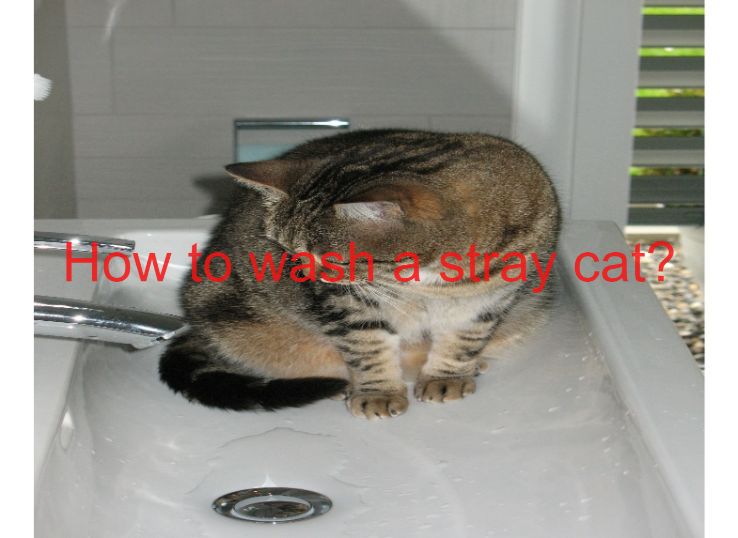How to Wash a Stray Cat: 4 Steps

One of the very first things you need to do before taking in a helpless, adorable stray kitten is to clean it. Cats are naturally water phobic. You are probably now looking for information on how to wash a stray cat. Read on to learn how to do this.
Table of Contents
How to Clean a Stray Cat? 4 Best Steps
A baby cat’s first bath can be a harrowing experience, both for you and the animal, since water is one of the things stray kittens and kittens in general dislike. You won’t need to worry – below are some steps on how to wash a stray cat correctly.
1. Be prepared
If you are worried that your cat will struggle, invest in a harness. If you want to prevent escape, choose a room with a closed door that is warm. Make sure you have a hairdryer, a towel-lined pet carrier, and a hairdryer beside the tub for our wet guests to use. Choose a shampoo specially formulated for cats. Tea tree oil is toxic, so you should avoid it.
2. Start Washing the Body
Stray kittens shouldn’t be immersed in water. Stray kittens hate water. The stray kitten will feel more at ease if you gently grasp the loose skin on its back. The method is called scruffing, and it works well for calm kittens, but for adults, it can be painful.
Gently rinsing the stray kitten with lukewarm water will help relieve some of the stress and discomfort. Try to rinse it as quickly as you can. Rinse the stray kitten until no lather remains on its body.
3. Clean the Face
Clean the head and face gently with a little soapy water. It is also important to wash the inside of the ears. After rinsing the washcloth with clean, lukewarm water, wipe the head, face, and inner ear. Continue to use the washcloth until the water drips clear.
4. Getting Dry
It is best to towel-dry your cat as soon as she is clean. Hairdryers can scare some cats. Try using low heat and a slow speed to dry your feline friend if she isn’t scared. To accomplish this, you may need to confine her to a carrier.
Cats can easily become ill, or in the case of kittens, low body temperatures can be fatal. If they are damp, they can easily become chilled and become ill. So, try to dry your cat as soon as possible.
Frequently Asked Questions
Q: What is the recommended frequency of bathing a stray kitten?
A stray kitten should only be bathed every four to six weeks as a general rule. Too many baths can aggravate the problem by drying out the skin and causing excessive scratching. Using fragrance-free and hypoallergenic wet wipes will ensure that your stray kitten looks neat and smells fresh.
Q: Can cats use baby shampoo?
Absolutely! In general, baby shampoo is also safe to use on cats because its ingredients are gentle.
Q: Can cats benefit from a bath?
The soothing nature of a stimulating massage will revitalize your cat during the bath. This is a natural behavior.
Conclusion
The initial few days of a stray cat as a member of your home can be tense not only for your fluffy animal but also for you. Washing it before anything else is a clever move because it aids start the cat’s journey from being an abandoned animal to a household cat by making it seem and smell good indoors.
It can be stressful for both you and a stray kitten the first few days that he or she is part of your family. The first step in transferring the kitten from being a stray to a household pet is to clean it thoroughly so it can take on the appearance and smell of a pet.
I have discussed earlier how to wash a stray cat. Following these steps will likely make your kitten more comfortable in the water, which will make subsequent baths a breeze!






